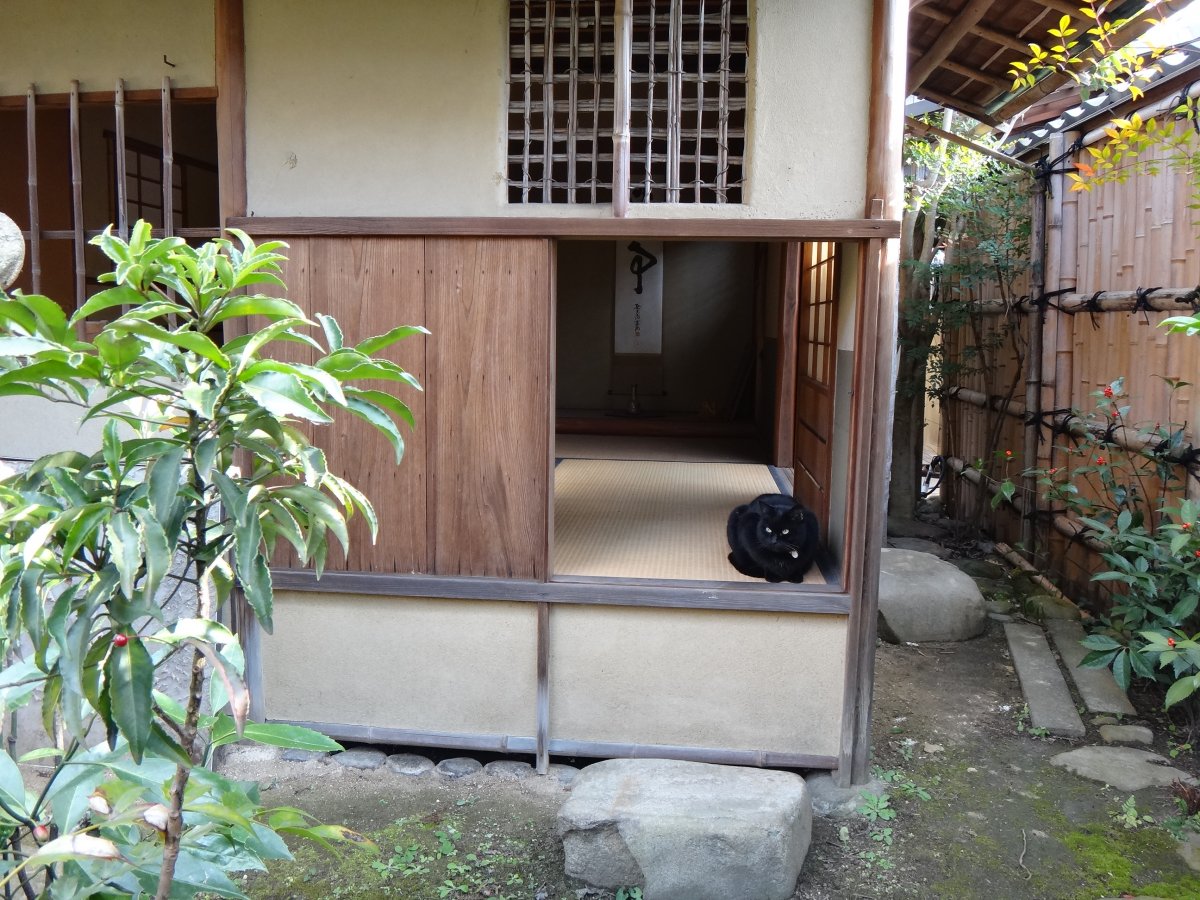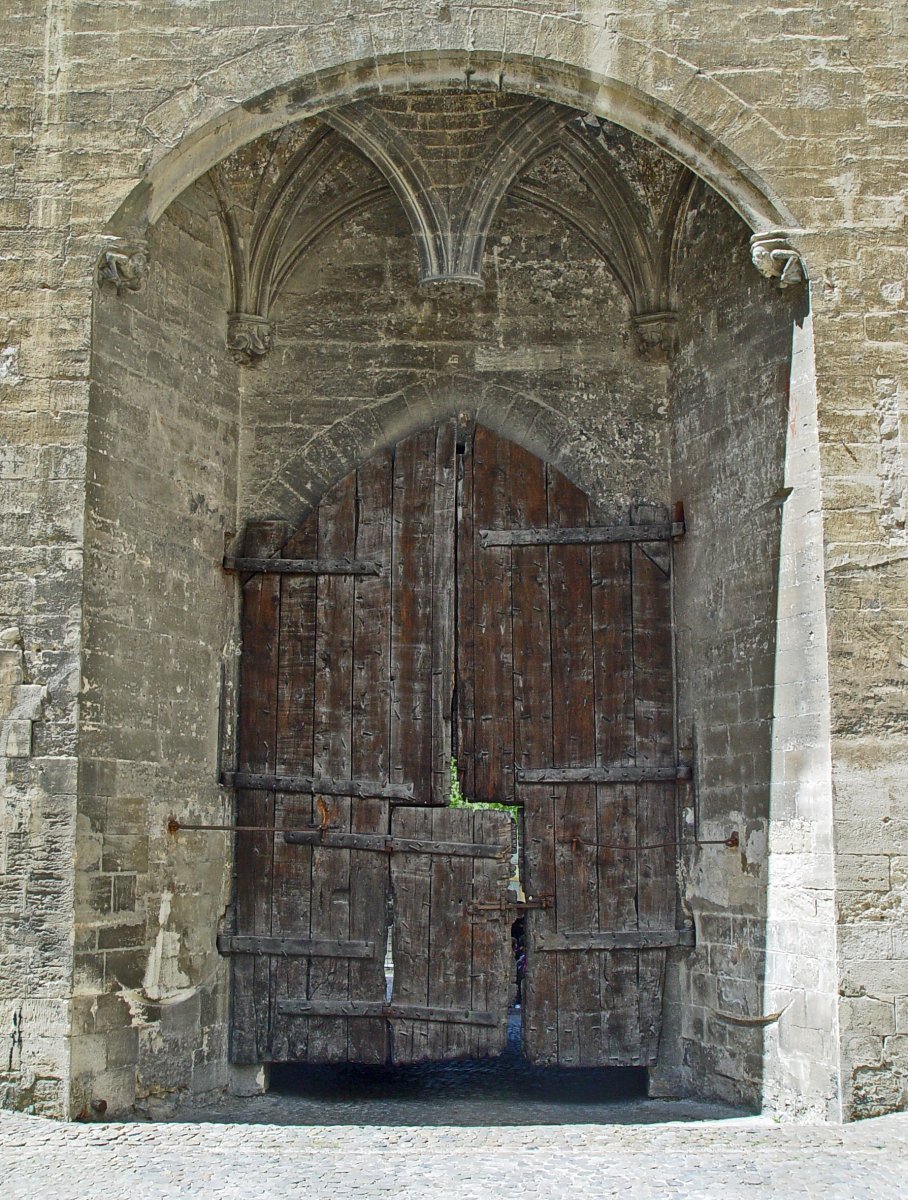Doors of Perception
Let's start with a quiz. Match the kanji compounds to the definitions:
| 1. 窓口 (まどぐち: window + door) | a. screen door |
| 2. 潜り戸 (くぐりど: passing through + door) | b. contact person |
| 3. 網戸 (あみど: net + door) | c. door within a door |
Answers coming up right after the photo.
1.b. 窓口 (まどぐち: window + door) means "contact person." But that's actually a secondary definition:
窓口 (まどぐち: (1) ticket window; teller window; counter; (2) contact person; point of contact) window + door
To refer to a primary contact person in a company, one might use this more explicit phrase:
連絡窓口 (れんらくまどぐち: primary contact person)
contacting (1st 2 kanji) + contact person (last 2 kanji)
Not one of these four kanji suggests that we're talking about a person! This appears to be an instance of metonymy, as when you when you say, "I need to call Arizona tomorrow," meaning that you have to contact a particular person in Arizona. If you want a more old-fashioned example, you can find a lot of metonymy related to kings, for some reason; when people used to talk about "the throne," "the crown," or "the scepter," those objects were often stand-ins for the king himself. That's how a ticket window can be a person!
2.c. 潜り戸 (くぐりど: passing through + door) means "door within a door." Technically, this uncommon term translates as "wicket door." To grasp this wonderful concept, look at the Avignon image above. Inside the large pair of wooden doors, there's a small door, which is a 潜り戸 or wicket door or wicket gate.
In 潜り戸, we're seeing a form of 潜る (くぐる: to pass through, go under), alluding to the way people must bend down to pass through small doors. Of course, that's just an image, not the reality in the Avignon door or in many Japanese contexts. For instance, at temples and castles in Japan, large gates are designed so that when the larger gate door is closed (e.g., at night), people still can enter and leave through smaller doors on the sides of the gate, as at the linked image.
A less charming example involves a metal door that automatically closes if there's a fire, preventing the fire from spreading. Such a door goes by this name:
防火扉 (ぼうかとびら: fire door) fire prevention (1st 2 kanji) + door
Because a 防火扉 will close during a fire, it's necessary to have a way to evacuate through such a door. That explains the role of the smaller door in one very short video and at another image.
Although fires, temples, and castles all have rather somber associations, the idea of a small door inside a large one plays with scale in a way that reminds me of Alice in Wonderland!

Photo Credit: Kazuhiro Kosaka
A tea ceremony house, known as a 茶室 (ちゃしつ: room or house designed specifically for the tea ceremony), has a very low and narrow wicket door with this name:
躙り口 (にじりぐち) walking on one's knees + door
The cat in the photo is enjoying a 躙り口 (in which 躙 is non-Joyo) at a tea ceremony house in Mie Prefecture on Honshu.
Measuring just 2 feet by 2 feet, a 躙り口 requires any adult who enters it to crouch with a lowered head. This is intentional, according to sites here and there. To my great surprise, this small door counters traditional notions of hierarchy. Being of high rank, warriors and samurai did not usually bow down to others, but they had to when entering a 茶室. Also, a warrior would typically carry a sword but could not fit it through the small door (really?!), so he would leave the weapon outside the building. By coming into the building without his customary protection, he showed that he trusted his host. In both of these ways, a 躙り口 makes everybody equal when it comes to the tea ceremony.
Nevertheless, ideas of rank don't just disappear. It's thought to be impolite to make a person of high rank bend down, so some tea ceremony houses have a second, larger door known as follows:
貴人口 (きにんぐち: door for those of high rank)
person of high rank (1st 2 kanji) + door
You can see that alternate door on the side of the house in the photo, above the stepping stone.
Aside from those doors and one or two windows, a tea ceremony house is dark. Set off in a garden, it feels like a refuge from the ordinary world. No wonder Basil the cat has decided to perch there.
3.a. 網戸 (あみど: net + door) means "screen door." And that makes sense. But this word can also represent the plastic featured in the following pet door.

The text in each spiky yellow speech balloon lays out challenges that pet owners face. First, whenever a dog or cat wants to go in or out, you have to open the screen door (which the promotional copy mentions in particular because this pet door specifically fits into a screen door). Second, if you don't have this pet door, an animal (especially a cat) is likely to do serious damage to the screen door by clawing it repeatedly.
The largest white words promise to alleviate ...
そんな悩みに
such problems
悩み (なやみ: worry)
... with a ...
取付簡単、ペットドア
pet door that's easy to install
取付 (とりつけ: installation);
簡単 (かんたん: simple)
In pink we see these words:
網戸, which you know as "screen door"
専用 (せんよう: exclusive use)
犬猫出入り口 (いぬねこでいりぐち: pet door)
Thus, this pet door can be installed only within a screen door, not in a wooden one, for instance.
I love the dog paw over the 犬 (dog), the cat ears over the 猫 (cat), and above all the singsong callout:
「ただいまニャン♪」
I'm home! Meow! ♪
ただいま (I'm back home); ニャン (meow)
Incidentally, it occurs to me that even a pet door qualifies as a wicket door!


Comments